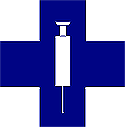 | Books, computers, classes and...BACTERIAL MENINGITIS? |
 | Books, computers, classes and...BACTERIAL MENINGITIS? |
|
Typical college student questions:
"What classes should I take?"
New question some college students are asking:
What is Bacterial Meningitis?
Worldwide, meningococcal disease affects 310,000 people each year. According to the US Centers for Disease and Control (CDC), approximately 2,600 people in the United States get meningococcal disease each year. Between 10-15% of the people who develop the disease will die. Of those who survive, 10% of the people will have lingering symptoms such as deafness, seizures or stroke. Although infants younger than two years old are at the highest risk for meningococcal disease, first-year college students who live in dormitories also have an increased risk for the disease. Symptoms of Bacterial MeningitisSymptoms can develop quickly (in less than a day). People with meningitis do not always show all of the symptoms of the disease. Widespread damage can occur if the infection spreads through the blood to tissues in the body.
How is Bacterial Meningitis Spread?A meningococcal infection is spread from person-to-person through the air or through nose and throat secretions. Sneezing, coughing, kissing, and sharing utensils or beverages can spread the disease. Some people infected by the bacteria will not have any symptoms of the disease.How is Bacterial Meningitis Diagnosed?Doctors look for the clinical symptoms of meningitis and can perform a lumbar puncture to examine a patient's cerebrospinal fluid (CSF) for evidence of infection. Bacteria are grown from the CSF sample to identify the type of infection and to determine the best treatment for the patient. A blood test or swab of the throat or nose is sometimes used to identify the bacteria.
Treating Bacterial MeningitisPatients with bacterial meningitis are treated with antibiotics. Often people who have come in close contact with the patient, such as family members, are also treated with antibiotics to prevent an infection.Preventing Bacterial MeningitisA vaccine against four strains of Neisseria meningitidis is available, but it is not given routinely. Because college freshman who live in dormitories have a higher risk of meningococcal disease than other populations, the CDC has recommended that these students and their parents be educated about the availability of the meningococcal vaccine. The close living conditions in dormitories may place these students at a higher risk for meningococcal disease. | ||||||||||||||||
|
Did you know?
|
The Meningitis "Belt" People living in a region of sub-Saharan Africa from Senegal to Ethiopia are at the highest risk for meningococcal disease. Living conditions and climate in this area can cause epidemics of bacterial meningitis. |
|
References and Links:
|
| BACK TO: | Neurological Disorders | Table of Contents |
![[email]](./gif/menue.gif) Send |
 Get Newsletter |
 Search Pages |
 Donate to Neuroscience for Kids |